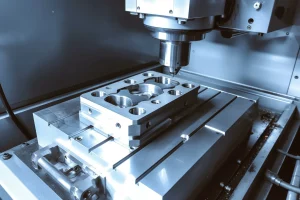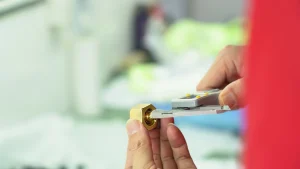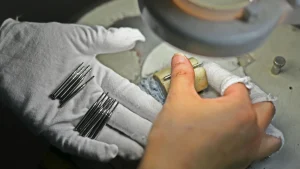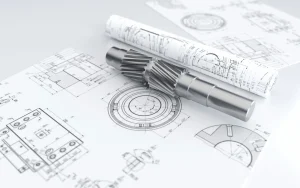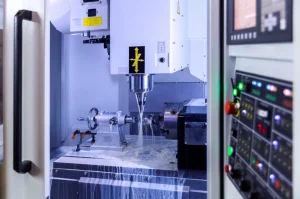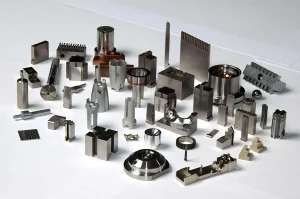1. Bevel Gear Transmission Overview
Bevel gear transmissions are used to transmit motion and power between two intersecting axes in space. The gear teeth are arranged on a truncated cone, with the tooth profile gradually decreasing from the larger end to the smaller end.
- For calculation and measurement, the parameters at the larger end are generally taken as standard values.
- The axis angle (Σ) between the axes of a pair of bevel gears can be arbitrarily selected based on transmission requirements.
- In general machinery, Σ = 90° is most commonly used.
2. Hot Precision Forging of Spur Bevel Gears
The precision forging process of spur bevel gears is widely applied in:
- Automobile and tractor differentials (planetary bevel gears, axle bevel gears).
- Agricultural and construction machinery transmissions.
After hot precision forging, the tooth profile can reach Grade 8 accuracy, allowing the gears to be used directly without machining.
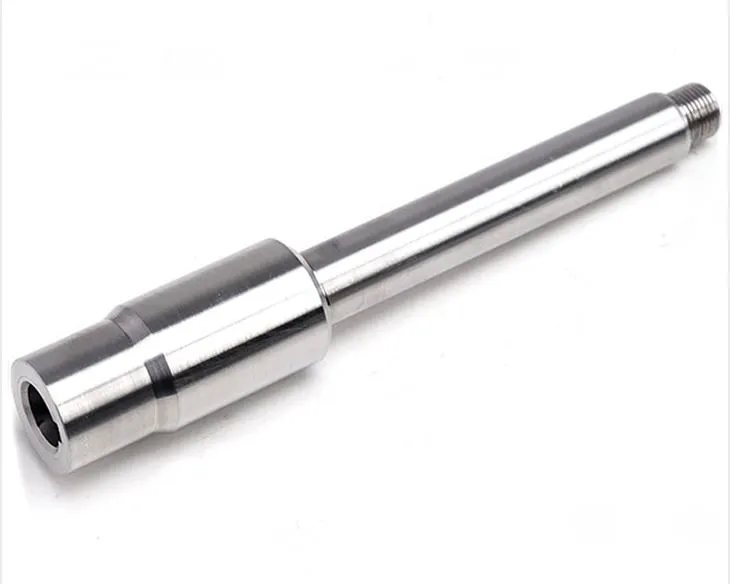
3. Traditional Forging Process
In the early stage, the forging process mainly relied on open-die forging with a friction press. To ensure the tooth profile was fully filled, the following were required:
- Pre-forging
- Final forging
- Flash trimming
Later, a two-step forging process (hot forging + warm forging) was widely adopted.
Traditional process flow:
Blanking → Heating → Upsetting → Pre-forging → Flash trimming → Cleaning → Final forging → Flash trimming → Air cooling → Inspection → Storage
4. Typical Equipment Configuration
The equipment typically used in hot precision forging includes:
- Blanking: High-speed band saw, sandblaster
- Heating: 4000Hz, 160kW medium-frequency induction heating furnace
- Upsetting: 800kN open-type press
- Pre-forging: 3000kN friction press
- Flash trimming: 1600kN open-type press
- Final forging: 3000kN friction press
- Secondary flash trimming: 1600kN open-type press
- Cooling: Storage bin
5. Automated Hot Die Forging Technology
In recent years, to reduce labor intensity and improve production efficiency, automated forging technology has been widely adopted.
Automated process flow:
Blanking → Heating → Upsetting → Pre-forging → Final forging → Trimming → Air cooling → Inspection → Storage
Key Features of Automated Production:
- A single hot die forging press performs multi-station die forging and trimming.
- Walking beam transports workpieces between processes.
- Integrated with medium-frequency induction heating devices.
- Realizes unmanned, continuous production.
6. Summary
Hot precision forging technology in part processing has the following key advantages:
- Ensures high accuracy (Grade 8) of bevel gear tooth profiles.
- Eliminates or reduces machining needs, improving efficiency.
- Supports automation, significantly lowering labor costs.
- Stable equipment configuration guarantees reliable production quality.

